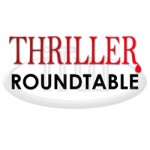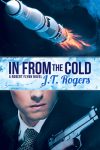

November 7 – 13: “Describe some of your favorite symbolism detected in recent thrillers.”
 This week we’re talking symbolism with ITW Members Hank Phillippi Ryan, J. T. Rogers and J. H. Bográn. Describe some of your favorite symbolism detected in recent thrillers.
This week we’re talking symbolism with ITW Members Hank Phillippi Ryan, J. T. Rogers and J. H. Bográn. Describe some of your favorite symbolism detected in recent thrillers.
~~~~~
 Hank Phillippi Ryan is the on-air investigative reporter for Boston’s NBC affiliate. She’s won 33 EMMYs, 14 Edward R. Murrow awards and dozens of other honors for her groundbreaking journalism. A bestselling author of nine mystery novels, Ryan has won multiple prestigious awards for her crime fiction: five Agathas, two Anthonys, the Daphne, two Macavitys, and for THE OTHER WOMAN, the coveted Mary Higgins Clark Award.
Hank Phillippi Ryan is the on-air investigative reporter for Boston’s NBC affiliate. She’s won 33 EMMYs, 14 Edward R. Murrow awards and dozens of other honors for her groundbreaking journalism. A bestselling author of nine mystery novels, Ryan has won multiple prestigious awards for her crime fiction: five Agathas, two Anthonys, the Daphne, two Macavitys, and for THE OTHER WOMAN, the coveted Mary Higgins Clark Award.
 J.T. Rogers grew up wanting to be either a superhero or a spy—but rather than pick one over the other, she chose to become a writer instead so she could be both in her spare time. Her fiction reflects her childhood obsessions, blending together the distrustful, cloak-and-dagger world of spies with the high-octane action and camaraderie of her favorite superheroes. The product of a bilingual education and an alumna of a handful of universities, J.T.’s passions include history, comic books, and Shakespeare. She has lived all over North America and loves to weave threads of authentic local color into her stories. Just ask her about Lucy the Elephant. Currently, she’s living the dream of being overworked and underpaid. She writes to stay sane—or that’s the story she likes to tell, at least.
J.T. Rogers grew up wanting to be either a superhero or a spy—but rather than pick one over the other, she chose to become a writer instead so she could be both in her spare time. Her fiction reflects her childhood obsessions, blending together the distrustful, cloak-and-dagger world of spies with the high-octane action and camaraderie of her favorite superheroes. The product of a bilingual education and an alumna of a handful of universities, J.T.’s passions include history, comic books, and Shakespeare. She has lived all over North America and loves to weave threads of authentic local color into her stories. Just ask her about Lucy the Elephant. Currently, she’s living the dream of being overworked and underpaid. She writes to stay sane—or that’s the story she likes to tell, at least.
 J. H. Bográn, born and raised in Honduras, is the son of a journalist. He ironically prefers to write fiction rather than fact. José’s genre of choice is thrillers, but he likes to throw in a twist of romance into the mix. His works include novels and short stories in both English and Spanish. His debut novel TREASURE HUNT, which The Celebrity Café hails as an intriguing novel that provides interesting insight of architecture and the life of a fictional thief, has also been selected as the Top Ten in Preditors & Editor’s Reader Poll. FIREFALL, his second novel, was released in 2013 by Rebel ePublishers. Coffee Time Romance calls it “a taut, compelling mystery with a complex, well-drawn main character.” He’s a member of the Short Fiction Writers Guild, Crime Writer’s Association, and the International Thriller Writers. He lives in Honduras with his family and one “Lucky” dog.
J. H. Bográn, born and raised in Honduras, is the son of a journalist. He ironically prefers to write fiction rather than fact. José’s genre of choice is thrillers, but he likes to throw in a twist of romance into the mix. His works include novels and short stories in both English and Spanish. His debut novel TREASURE HUNT, which The Celebrity Café hails as an intriguing novel that provides interesting insight of architecture and the life of a fictional thief, has also been selected as the Top Ten in Preditors & Editor’s Reader Poll. FIREFALL, his second novel, was released in 2013 by Rebel ePublishers. Coffee Time Romance calls it “a taut, compelling mystery with a complex, well-drawn main character.” He’s a member of the Short Fiction Writers Guild, Crime Writer’s Association, and the International Thriller Writers. He lives in Honduras with his family and one “Lucky” dog.
- LAST GIRL MISSING with K.L. Murphy - July 25, 2024
- CHILD OF DUST with Yigal Zur - July 25, 2024
- THE RAVENWOOD CONSPIRACY with Michael Siverling - July 19, 2024
